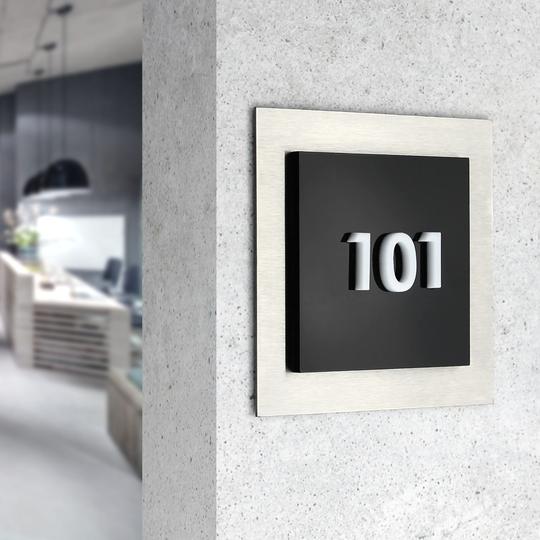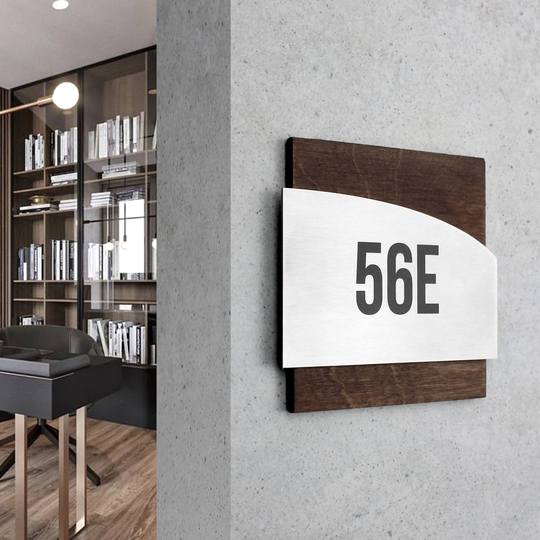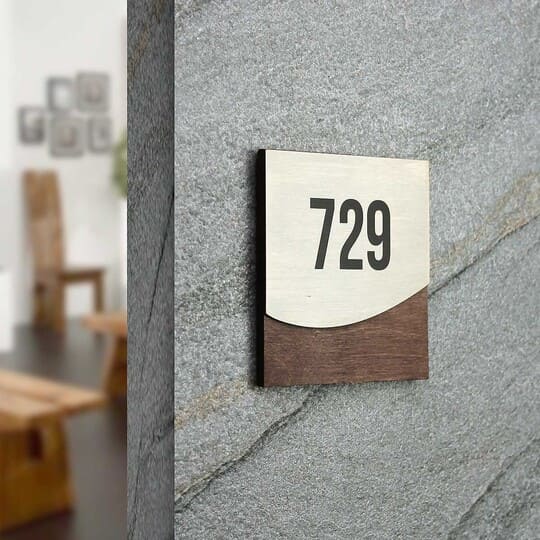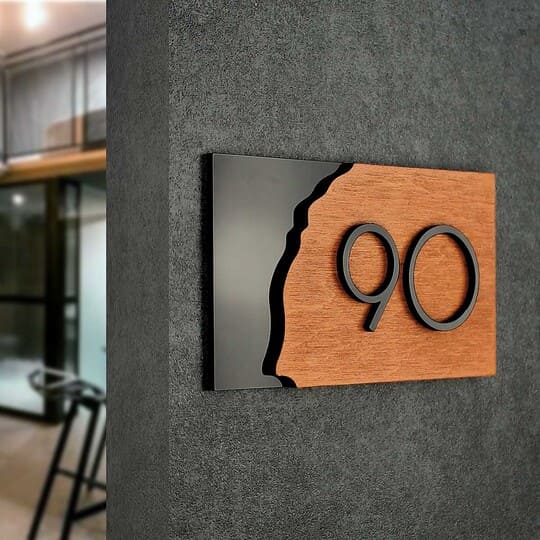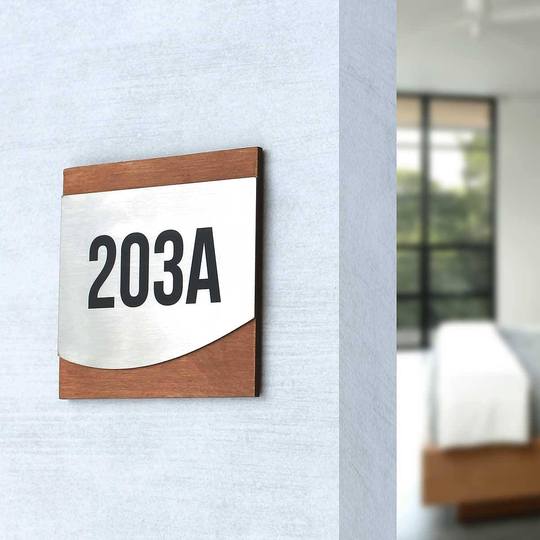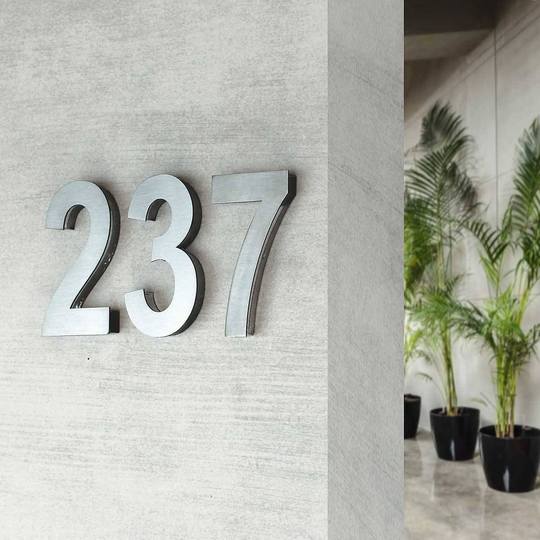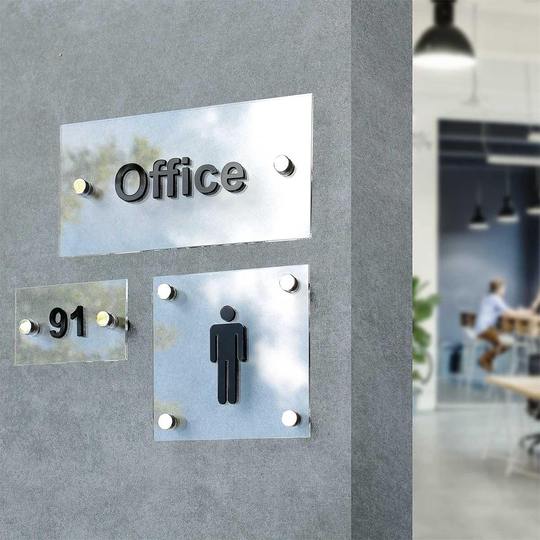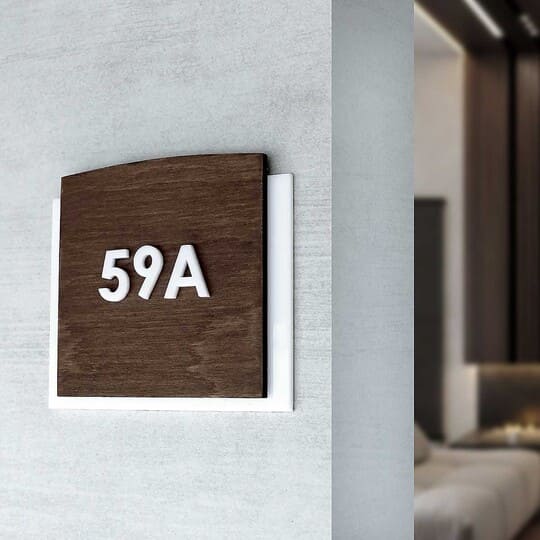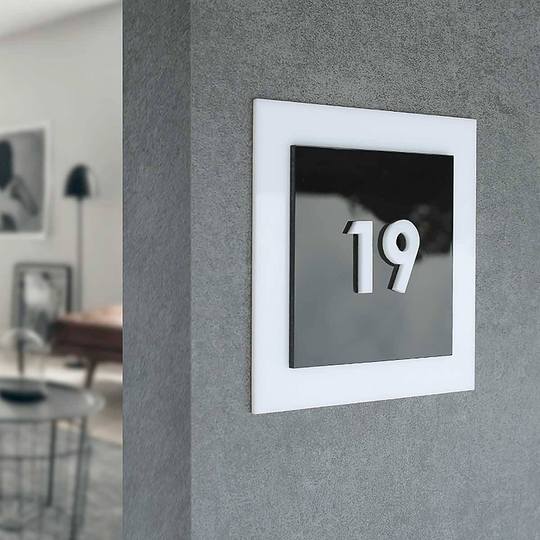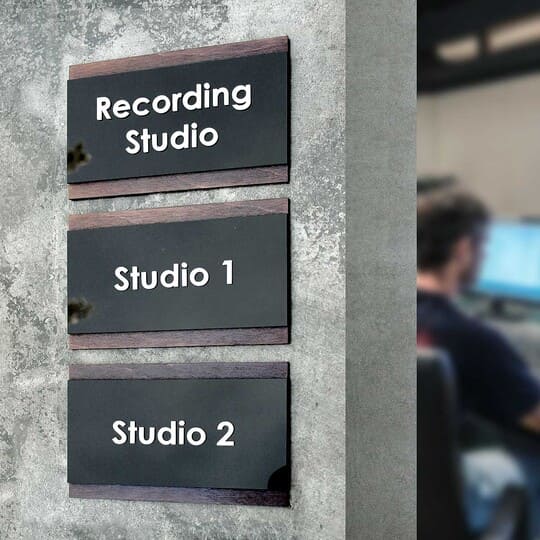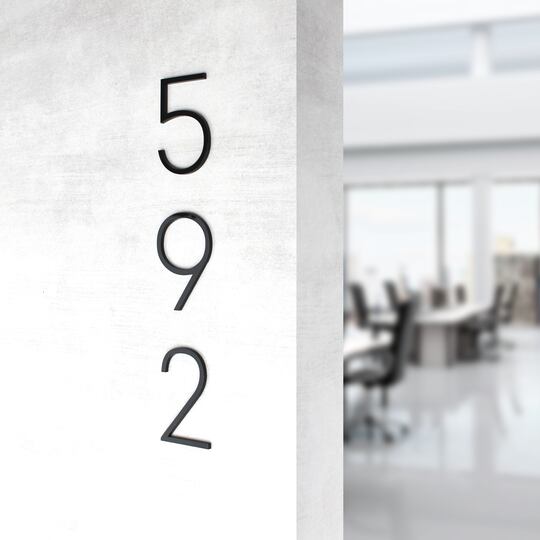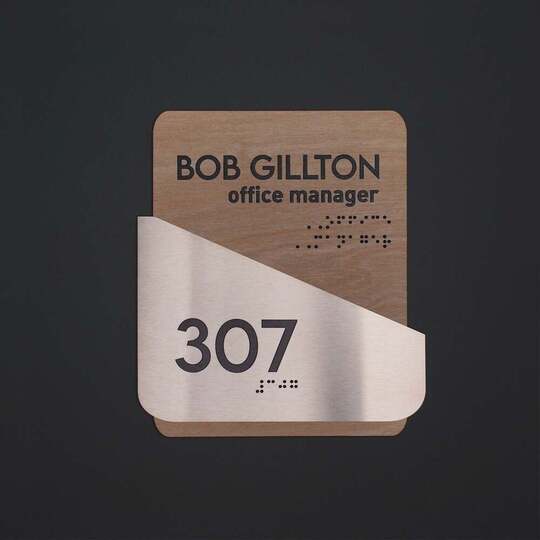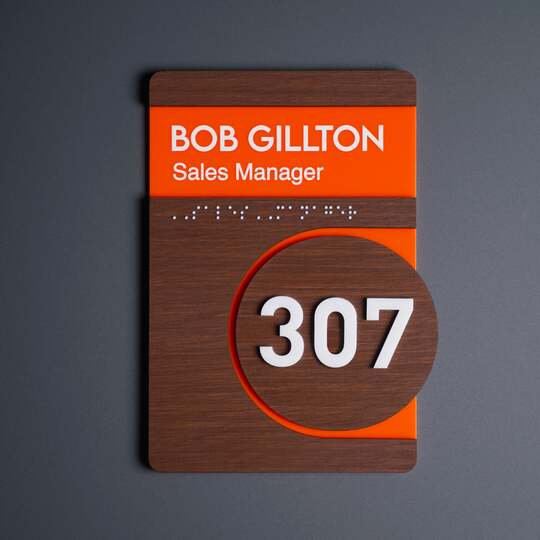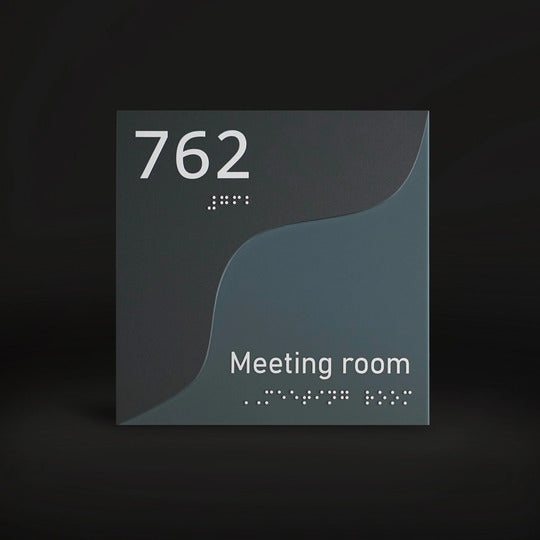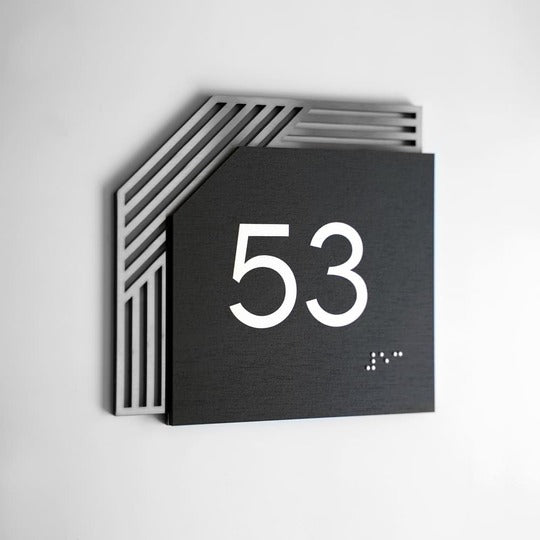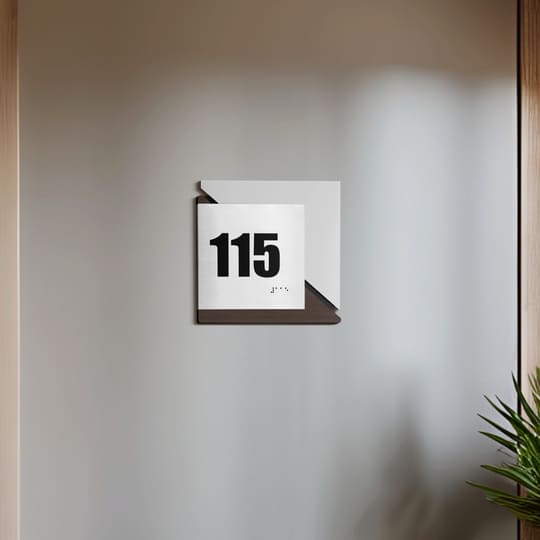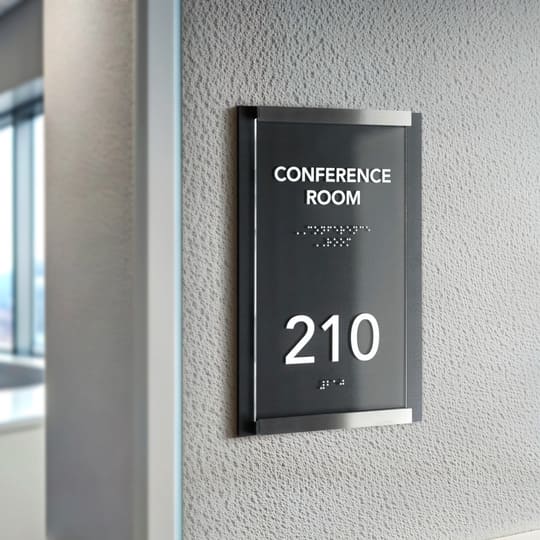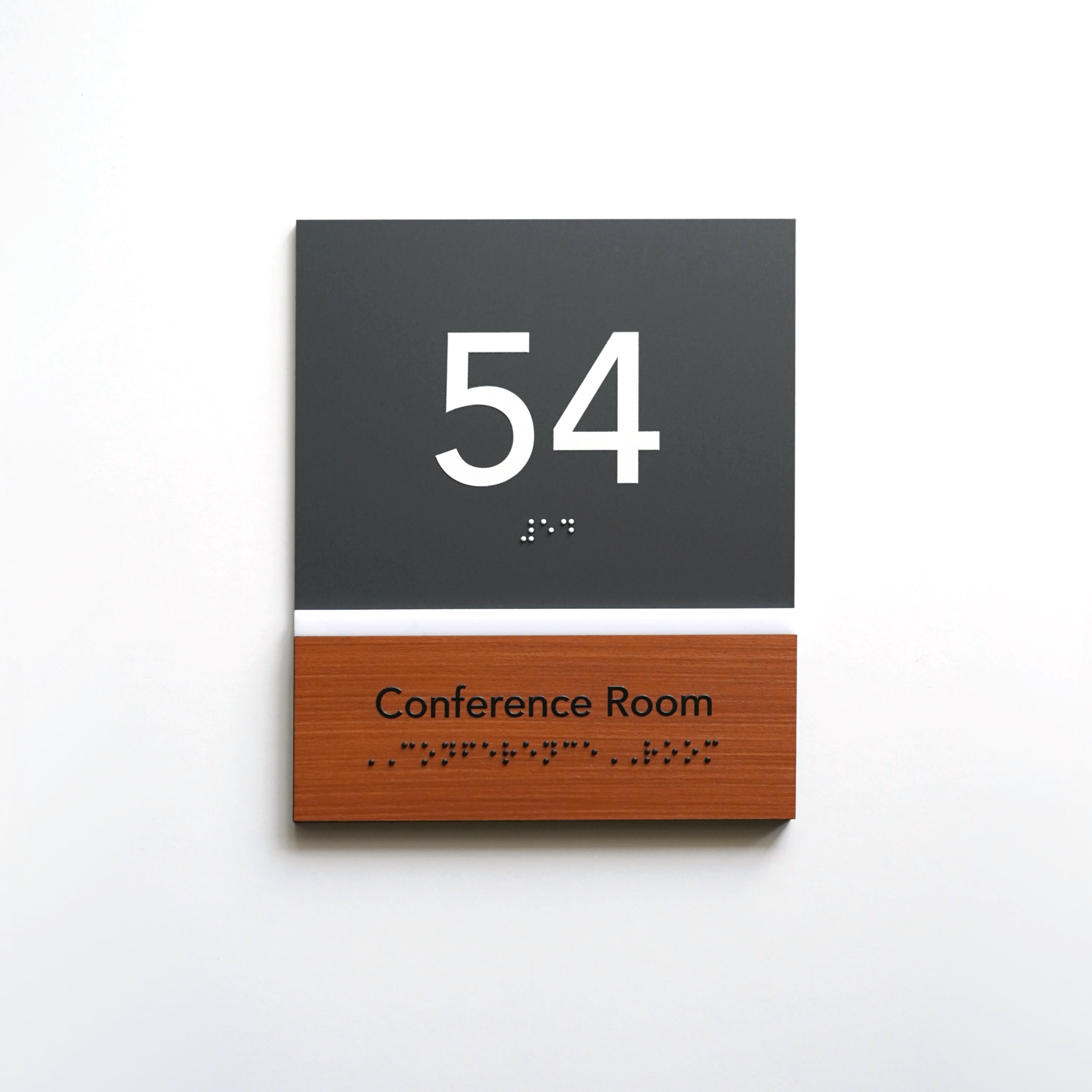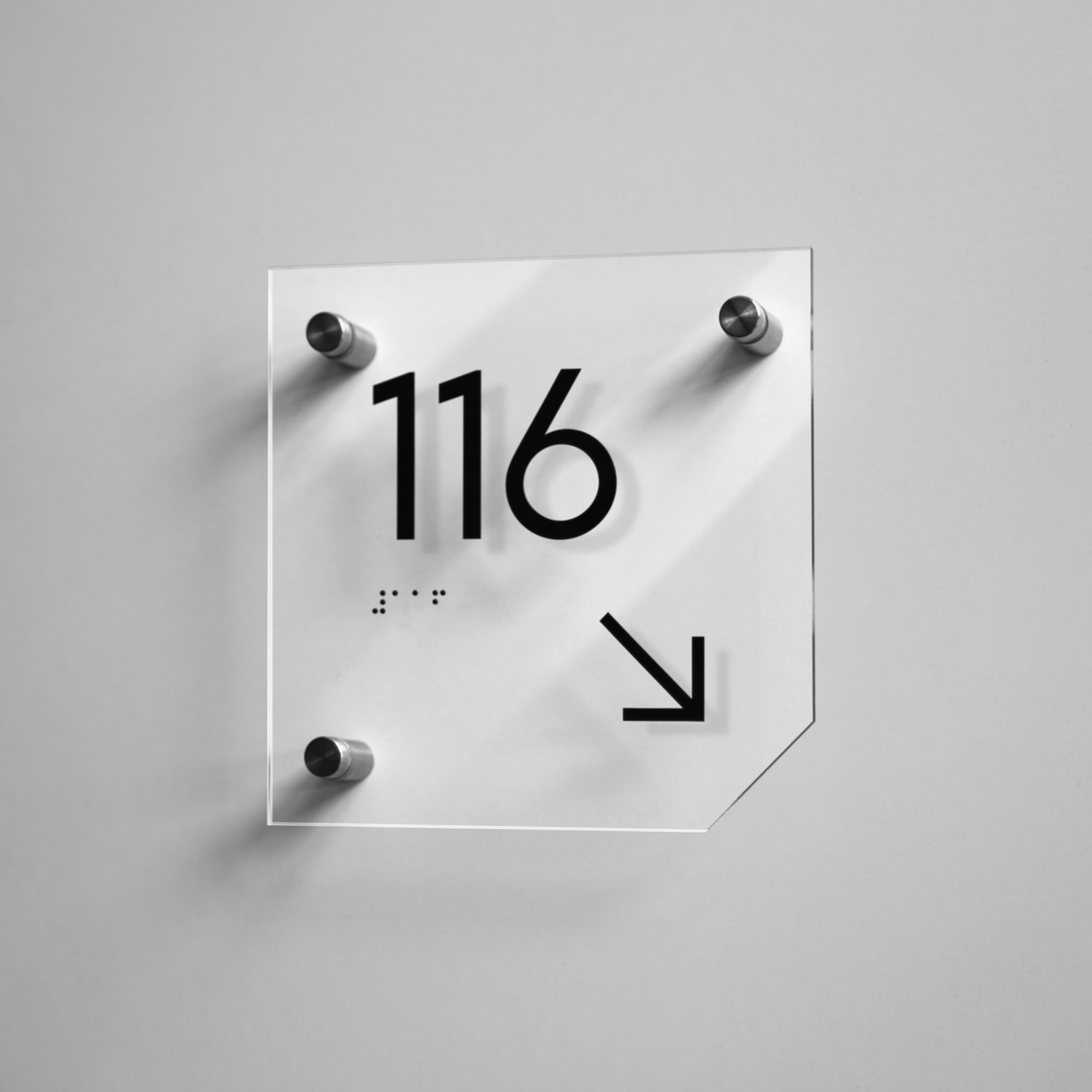
Trends of 2025: what modern wayfinding signage looks like
Modern navigation signs as the new standard of comfort
A modern interior is not just about a well-chosen furniture or wall color; it is a harmonious ecosystem where every detail matters. In 2025, modern wayfinding signage has evolved far beyond simple directional tools. They have become elements of style, carriers of brand identity, and a medium that forms the first impression and enhances interaction with customers. Whether it's a shopping mall or commercial space, hotel or office environment, the design of navigation signs reflects the company's philosophy.
What trends are setting the new standards in this field? In the article, we analyzed current trends and explored how technology intertwines with aesthetics to create stylish and durable navigational solutions.
The importance of personalized directional signs in modern interiors
Directional signs serve more than just a guiding function. They are a form of communication between businesses and their visitors. Seamlessly integrated, branding signs enhance the customer experience, simplify movement flow, and boost brand recognition. These signs do more than guide — they convey the atmosphere, style, values, and quality of service.
Ignoring this component is a missed opportunity to make a meaningful impression. Cheap or outdated interior business signs can tarnish even the chicest spaces. Think of an upscale restaurant with plastic menus — it’s a minor detail but enough to disrupt the overall aesthetic.
Increasingly, custom wayfinding signs are becoming the meeting point between architectural aesthetics and customer engagement strategies. They play a vital role in helping people navigate physical spaces — whether it's the entrance to a building, an office, a retail area, or a residential complex. In addition, they increase the level of trust and comfort: visitors adapt to the environment faster, avoiding confusion, and effortlessly finding their way.
In 2025, we are witnessing a true revolution in navigation. Modern interior signs no longer resemble the utilitarian solutions of the past. They capture the essence of a space through design, colors, textures, and details. For example, modern door numbers designed in the same visual style as the rest of the signage system, highlight the interior’s concept and provide a cohesive brand perception. This visual language consistency creates the wow factor that makes a venue stand out among competitors.
The signage industry is evolving rapidly, responding to key trends like customization, minimalism, durability, and the integration of digital technologies. The trends of signage of 2025 demonstrate that well-designed navigation is not just a detail but a powerful branding tool. It is a strategic asset that influences first impressions, brand recognition, and emotional connection with customers.

Modern signage trends: when navigation works for style
Combination of wood and metal
Wood and metal signs are a trend that strikes a balance between naturalness and manufacturability. Wood adds warmth, while metal brings modern sharpness. Together, these materials create a sense of balance, refined elegance, and uncompromising quality. This combination is the perfect solution for modern signage in retail spaces and premium hotels. It aligns with the growing trend of conscious consumption and the desire for durable, aesthetically perfect elements in the interior.
This material pairing works especially well for:
- room numbers and signs in upscale hotels;
- interior solutions for retail spaces;
- office spaces that seek to emphasize status and attention to detail;
- medical institutions valuing both functionality and trust.
It also blends beautifully with both modern and classical interiors, adapting easily to various stylistic concepts while drawing attention with its texture and depth.
We work only with natural wood and stainless steel — materials that do not lose their appearance over time and emphasize style for years. These materials are not only durable but also eco-friendly, making them the number one choice for responsible design. Each sign is handcrafted with attention to every detail, featuring options to add logos, Braille text, or QR codes.

Minimalism and cleanliness of lines
Minimalist signs with clear graphics and a minimum of text are another key focus. This approach doesn't overload the space but strengthens the brand's identity. In 2025, this is the standard for interior directional signage. This approach demonstrates confidence in your visual language — when less is enough to say the most important.
Minimalism isn’t about the absence of content; it’s about emphasizing what truly matters. In the design of the signs, it allows you to focus on the main thing: information and visual style of the space. Well-crafted minimalist signs offer a balance between form and content, simplicity and expressiveness. They:
- emphasize the aesthetics of modern interiors;
- do not distract from the overall concept;
- are easily understood, even from a distance.
Moreover, the minimalist approach aligns seamlessly with the principles of universal design — when information is accessible, understandable and enjoyable for all users, regardless of their experience or context.
This approach is especially important in interiors where visual restraint and simplicity take center stage — offices, galleries, salons, and apartments. In such places, signs should not compete with art or interior signage solutions; instead they should delicately support them, while remaining functional and at the same time almost invisible at first glance.

Interactivity and inclusivity
Signs with QR codes allow you to add a level of digital interaction, while signs with Braille (ADA-compliant) are a manifestation of concern for all customers. This is not just social responsibility, but also a well-thought-out strategy for customer engagement.
In a modern space, it is important to take into account not only aesthetics, but also functionality for all visitors — without exception.
QR codes on signage provide access to:
- additional information (e.g. description of services);
- interactive maps;
- websites and menus;
- instructions or video guides.
Braille, meanwhile, is more than just a compliance checkbox. It’s a statement that your business values inclusivity. These small yet meaningful details help build trust and foster long-term loyalty among visitors.
We integrate these elements into signs without compromising the design — harmoniously and taking into account the overall style. After all, care can be stylish.

Eco-friendly materials and durability
Eco-friendly materials are the foundation of long-lasting signage that retains its aesthetic appeal for years. This is not just a passing trend, but a direct response to a global demand for eco friendly signage solutions with minimal environmental impact.
We work only with certified wood, acrylic glass, and stainless steel — no PVC, plastic, or polystyrene. As a result:
- our products do not harm the environment;
- they have an extended lifecycle;
- their aesthetics remain intact even after years of use.
This is the perfect solution for businesses that embrace a thoughtful approach to interior design — hotels, offices, medical centers. Your signage won’t just indicate directions — it will embody your values.

Custom signs for brand identity
In 2025, personalized business signs are a must-have for those who want to be recognizable. They complement the architecture of the space, reinforce branding, and in tandem with modern door number signs create a logical and visually appealing navigation system.
A prime example? Famous luxury hotels are increasingly opting for individually crafted signs made from sustainable materials that combine tactility, aesthetics, and functionality.
Customization is a silent but powerful way to communicate with customers. It enables the integration of:
- brand logo;
- color accents of corporate space identity;
- unique shapes and fonts;
- QR codes linking to required information;
- adaptation for the interior of a particular object.
- When signage feels like an integral part of the space rather than an external element, that's a strong brand visibility in action.

Cutting-edge signage production technologies: precision, quality, durability
Trending signs: precision in every detail
Advanced manufacturing techniques such as CNC processing of wood, acrylic, and steel that ensures perfect geometry of forms.
Modern interiors demand perfection in every aspect — from architecture to the finest navigation details. We use professional-grade equipment to ensure every sign has sharp contours, smooth surfaces, and a level of accuracy that is tangible to the touch.
Precision is more than a technical trait. When the form and content are perfectly balanced, the space has a complete appearance. Carefully cut elements emphasize a brand’s meticulous attention to detail — something customers immediately perceive, even subconsciously.
We refine every line to ensure:
- there are no burrs or uneven finishes;
- fonts remain crisp at any scale;
- a sign’s overall structure appears high-end and flawless.
Long-lasting imagery
Permanent UV printing ensures the durability of the image — it will not fade over time and resists moisture and physical impact.
Unlike other printing methods, UV prints don’t crack, dull, or lose clarity, even after many years of use. Signs with such printing are an ideal solution for high-traffic interiors — hotels, offices, hospitals, apartments — any spaces where aesthetics must pair with resilience. It’s not just about visual appeal — it’s an investment in the durability and stability of your space's brand identity.
Visual accent
Acrylic letters for signs create depth and texture, transforming it into an interior focal point.
Dimensional elements enhance the interplay of light and shadows, creating a 3D effect, drawing attention, and reinforcing the space’s overall aesthetic.

Conclusions: design of navigational signs that works for the image
Interior navigation signs in 2025 are far more than directional markers. They are a touch of style, a reflection of the brand, a demonstration of your approach to detail and customer care. They become a full-fledged part of the interior, which simultaneously solves functional tasks and forms the emotional perception of space.
1. Invest in trendy signs that not only inform, but also sell your space at first glance.
They reinforce the concept, speak the language of design and architecture, create a lasting impression, and remain in visitors' memories.
2. Choose signage materials that align with your visual and brand values. Wood, acrylic, stainless steel are not just about appearance, but also about tactility, durability and aesthetics.
3. Don’t hesitate to be recognizable — opt for custom design solutions.
Signs with your logo, brand colors, signage shapes, and even QR codes turn into your branding and communication tools.
4. Trends of modern signs are not about fleeting fashion for one season. They are about strategic decisions.
They work for you every day: improving the quality of navigation, strengthening the identity, forming the brand image and emphasizing attention to detail.
Today, a modern sign is a part of marketing. A part of the service. A part of who you are.
Ready to upgrade your space? Request a consultation, and we’ll help you select the perfect signs adapted to your venue — stylish, durable, functional.
